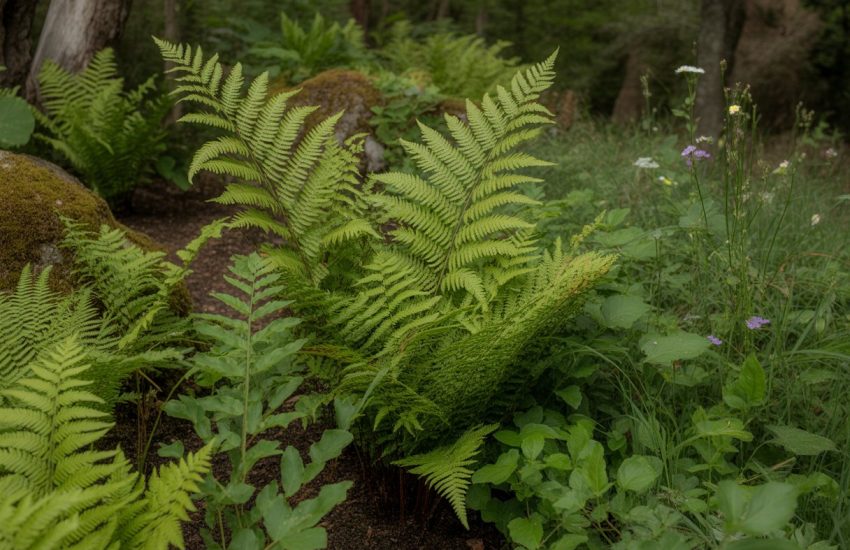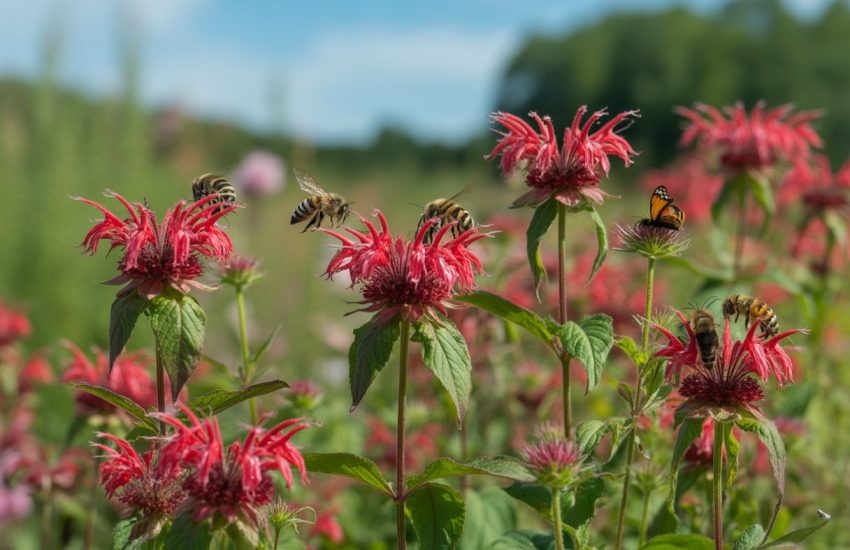New York Native Plants For Landscaping [with Pictures]
New York is a unique place with plenty of unspoiled nature. We’ve put together this list of New York native plants you can use in your garden or home. These plants are beautiful and beneficial to the ecosystem around you. If you live in the state and want to add some green to your life, read for more information about these plants, including familiar names and locations where you can find them.
Native plants are essential for several reasons. They help to enrich the soil, keep weeds at bay, and provide food for wildlife. Additionally, they make your environment more beautiful. There are plenty of native plants that are easy to grow and are suitable for small gardens or large yards. The following list features some of New York Native Plants for Landscaping.
Sedum
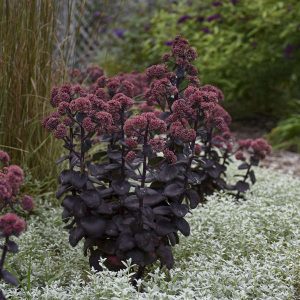
Sedum mainly grows in the eastern United States, but some species can also be found in western states. This plant prefers moist soil and full sun. It can be grown indoors or outdoors, but it does best in the shade of a tree or shrub. If you want to grow sedum indoors, you should place your plant near a window where it will get plenty of light. If you want to grow sedum in your yard, you should do so only in areas that receive a lot of sunlight. Sedum does not need much water and can survive in dry weather. When planting this plant, you should ensure that it has plenty of room to grow. Sedum can be used as a ground cover or as a standalone plant. It is also used as part of a border or in beds and containers. Native plants are often used for landscaping because they help to create an attractive look in any area where they are planted. They are helpful because they decay slowly, making them better than ornamental grasses when creating a soft and natural look around your home or garden.
Blue Flag Iris
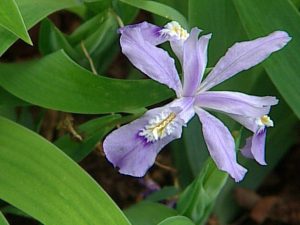
This native plant grows around 10 inches tall with blue flowers that open at night and close during the day. The plant is also known for attracting pollinators such as bees that will help pollinate the flowers once they bloom again in late spring or early summer after a cold winter has passed over them. This makes it an excellent choice for any garden that needs more pollinators. According to the Delaware Wildflower Society, “Blue flag iris is a great choice for a butterfly garden. It is also one of our area’s coldest hardy plants for gardens, surviving the winter temperatures with little damage.” The Blue Flag Iris is a perennial plant that can survive through the winter months in any climate. The blue flowers are white and come in various shapes and sizes, including oblong, circular, or elliptic. In gardening, the blue flag iris is a good choice for butterfly gardeners since it attracts the Monarch Butterfly, which is a good choice for gardens with butterflies.
Blue Flag Iris can be found in many areas in New York and surrounding states such as Pennsylvania, Connecticut, and New Jersey. It grows in full sun along roadsides, forests, fields, and gardens. It prefers to grow near rivers or streams but also grows well in dry soil. Along with the blue flower petals, the plant also produces many small white flowers that bloom from spring through summer. Blue Flag Iris grows best when planted in full sun or partial shade. The soil should be moist but well-drained so it doesn’t stay soggy during summer. The plant thrives well when planted near a tree or other type of vegetation that provides it with shade during hot summer days. This helps protect the plant from drying out too much during the summer months, which could lead to dying off or even death of the plant. The plant needs to have moist soil conditions throughout most of its growing season, so ensure you keep it watered throughout the year to prevent any problems with it not growing correctly. To control insects from eating your Blue Flag Iris, make sure you provide it with plenty of favorable insect habitat. This means using plants like milkweed around your Blue Flag Iris and adding flowers that attract these insects, such as bee balm, goldenrod, and wild geraniums.
Mountain Phlox
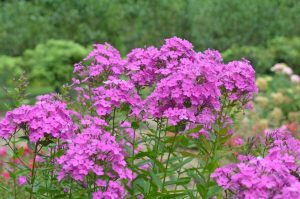
The mountain phlox is a plant that thrives in dry conditions. This perennial blooms from July to September. It’s also known as wild petunias and is one of the best plants for attracting butterflies. Mountain phlox grows up to 2 feet high and has bright yellow flowers that are especially attractive to bees and butterflies. The flowers are also edible and can be eaten as a garnish with green beans or as an addition to salads. The mountain phlox is found in the Adirondacks in New York and Maine. It usually grows at elevations of 1,500 to 4,000 feet. It can be found in low-lying areas and on rocks and cliffs. When planting the mountain phlox, plant it in full sun. It can also be planted in the shade. If you are planting it in the shade, you may need to water it more than you would normally. This will ensure that the root system grows well and is not damaged by drought.
Ragweed
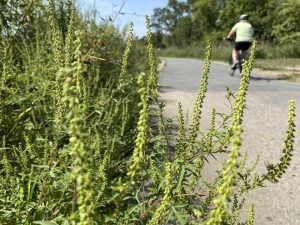
Ragweed is an annual plant that grows in many colors, including red, purple, white, orange, yellow, and more. Its bright colors make it an easy plant to spot from a distance. Ragweed can be found in the Adirondacks but tends to grow more prevalent in the northern parts of New York State. This plant produces large clusters of small white flowers in early summer, which attract pollinators like bees and butterflies. It’s beneficial for landscaping because it provides food for wildlife like birds. However, ragweed can also cause problems by spreading weeds when it escapes into your garden or yard. The Ragweed plant grows in areas that are close to other plants. Therefore, it is possible to find it in Adirondack Park and parts of New York State. The native plant is a perennial that grows in the wild. Therefore, it can be planted in your yard year after year. However, this plant is not recommended for beginners because it spreads quickly. When planting this plant, be sure to plant it in a spot with full sunlight and ample room to grow for the first few years. This plant can be found in many nurseries and garden centers.
Coralroot
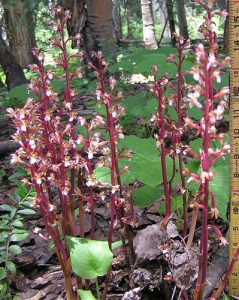
The coral root is a perennial shrub native to New York State that grows up to 3 feet tall. It has long leaves with petioles that measure up to 5 inches long. Coralroot prefers shady areas where it can grow under trees or shrubs without worrying about too much sunlight. It also grows in wet soil near streams and ponds. Coralroot has small, green leaves that turn red or yellow in the fall, which is when it produces small red flowers and clusters of yellow berries. The berries are edible and can be eaten raw or cooked. It is primarily found in eastern New York and New Jersey. This plant is found throughout most of the state, except in the Adirondack Mountains. It grows in areas with a high pH level and benefits from partial shade. When planting coral root, be sure to plant it in well-drained soil. This plant prefers partial shade, so a location with some protection from the sun is best. During the growing season, be sure to water the plant frequently. It is also best to keep it away from the roots of other plants so that their competition for nutrients will not harm it.
White Pine
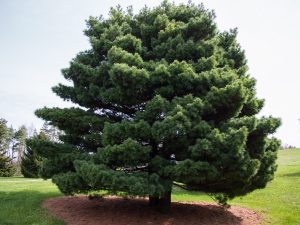
White pine is one of the best native trees for Adirondack landscapes. It grows up to 50 feet tall and can be found in many colors, including gray, blue-green, and golden. White pine is helpful for landscaping because it provides a beautiful canopy that shades your yard from the harsh sun. White pine also provides wildlife with food through its seeds and needles, which birds use as nesting material. White pine trees are also helpful for woodworking because they produce high-quality lumber that’s easy to work with. This plant grows in areas that have a mild climate since it can tolerate high temperatures. It can be found in the northern parts of New York, including the Adirondacks and Catskills. To grow the White Pine, you will need to buy a tree. Ensure you don’t prune it too often to keep it healthy and beautiful. Just remember to water the tree well every week. It is also essential to keep it away from the harsh sun and wind since it is not very resistant to frost.
Blackberry
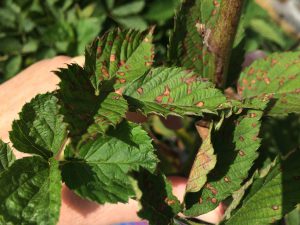
Blackberries are a perennial shrub native to New York State that grows up to 3 feet tall. The shrub has long, thick roots which help it adapt to wet soil conditions. Blackberries have small leaves on their branches and small white flowers that bloom from June through August. Blackberries produce large clusters of fruit that ripen during summer, which attract insects such as bees, butterflies, and birds. Blackberries are edible, but they should be eaten sparingly as they can cause stomach upset if you overeat at once. They make an excellent addition to a wild edible garden but are not very popular among humans because they are so tart.
The blackberry grows naturally in most of New York’s Adirondack Mountains and on some islands near Lake Ontario and Lake Erie. It mainly grows naturally in areas with poor soil and wet conditions. When growing blackberries, it is essential to provide them with a good amount of sun and water. Blackberries are a slow-growing plant, so allow 10 to 15 years for them to fully mature and bear fruit. Blackberries like acidic soil with a pH of 5.5 – 6.5 but will tolerate higher pH levels as long as it is well-drained. Blackberries should be planted at least 6 inches apart to spread out enough to avoid competition with other plants and animals in the area. They also need room to grow because they take up a lot of space in the garden or yard.
Horsetail
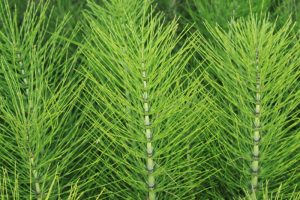
Horsetail is a perennial herb native to New York State that grows up to 8 inches tall. It has long grasslike leaves that can grow up to 1 foot long. The plant has a unique appearance compared to other plants because it has no flowers or fruit and only reproduces through its roots, spreading out under the ground. Horsetail is helpful for landscaping because it provides food for wildlife such as birds and mammals. Horsetails also offer a habitat for small animals such as insects, worms, and snails by providing shelter from predators like birds, rabbits, and deer. It usually grows in moist, rich soil with a pH of 6.0 and a temperature of around 50 degrees Fahrenheit. When growing a group of horsetails, plant them in clumps so they can grow together. You can also plant them in the middle of your garden or lawn. The easiest way to propagate horsetails is by taking stem cuttings. It can be used for landscaping, composting, and composting tea.
Pennsylvania Sedge
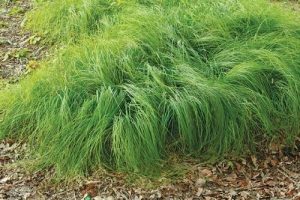
Another native plant that has made a comeback is the Pennsylvania sedge. These grasslike plants grow in colonies of low, feathery green blades. The plant is so common that it is often mistaken for a weed. However, Pennsylvania sedge is an excellent plant to grow in your garden because it helps to reduce erosion and creates a habitat for pollinators and other insects. The Pennsylvania sedge usually grows in wet, marshy areas. It is found in the lower Hudson Valley, along the East Coast and New York areas. The Pennsylvania sedge is easy to grow. You can buy it from nurseries or find it in your local garden center. It will thrive in most soils but prefers moist, well-drained soil.
Mountain Laurel
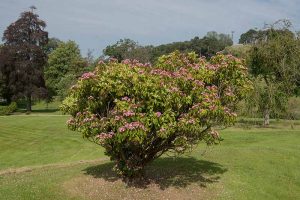
Native Americans have used this shrub for centuries as an herbal remedy, food source, and a source of fiber and oil for making candles and soap. Mountain laurel is an evergreen shrub with glossy leaves, which appear dark green when young but become bright yellow or orange when the weather turns cold during the winter months. This plant grows best at higher altitudes where it receives more sunlight than at lower altitudes where its shade may inhibit growth. Mountain laurel prefers full sun but will tolerate partial shade. The leaves turn a deep red, purple, or blue when the weather turns cold in winter. The Mountain Laurel is a great plant to use in the garden. It can be used as a hedge, windbreak, or privacy screen. The leaves of the Mountain Laurel contain tannins that are used to make soap and are also used in tanning leather. The Mountain Laurel is an excellent plant for attracting wildlife to your yard because it provides food and shelter for many birds and other animals.
Red-osier Dogwood
This native shrub is a member of the rose family and can grow to be as tall as 12 feet. Its wood makes bows and arrows, tool handles, and other products. Red-osier dogwood also has medicinal uses, including treating fever, stomach problems, and skin conditions. This plant prefers full sun but will tolerate partial shade if necessary. The leaves are dark green, which makes this plant especially attractive during the summer months when it has plenty of sunlight to grow. The flowers are small and can be white or pink, depending on the variety. It usually grows in areas of moist, rich soil in woodlands. If you want to grow this plant in your yard, you can find it along the coast, in the southern parts of New York, and the upper portions of New England.
Cattail
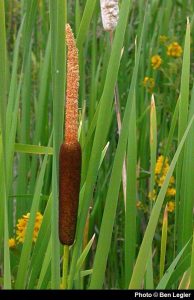
Cattails (Typha latifolia), also known as bulrush or water-grass, are perennial plants that grow along water sources such as lakes or ponds, making them perfect for prairie restoration projects. Cattails have long rhizomes to create new plants after they die off each winter. In addition to their drought-tolerant nature and ability to grow in wet areas, cattails produce food for wildlife such as ducks and other birds. Cattails can be found from New York through Pennsylvania into Ontario along the Great Lakes coastlines and river banks. The Cattail can be used in creating a natural-looking water garden and prairie restoration projects. Use the Cattail to create a natural-looking water garden by planting them along lakes or ponds. The plants can also be a food source for wildlife such as ducks and other birds.
Elderberry
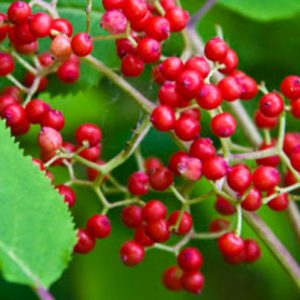
The elderberry (Sambucus canadensis), also known as common elder or elderberry, is an evergreen shrub that grows to about eight feet tall when it’s not flowering. Its leaves have three lobes that curl inwardly toward the stem at the tip of the leaf. Its branches are covered with spines protecting it from animals trying to eat them during the winter. Its flowers have five petals which give off an unpleasant odor when they open up into bloom in early springtime. In addition to being medicine for sore throats, elderberries make excellent jams, jellies, and wine. The elderberry is native to the eastern United States but can be found in many places throughout the country. It grows naturally in dry sandy soil and can be found in wooded areas, cities, and suburbs. The elderberry likes full sunshine. If planted in a shady spot, it will have difficulty growing. The elderberry is a perennial that grows back every year if allowed to do so.
Black-eyed Susan
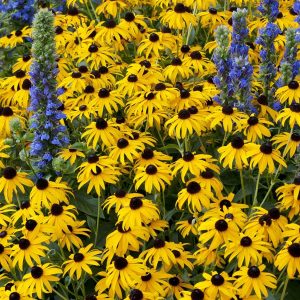
The black-eyed Susan is a perennial that can grow up to 15 feet long and 5 feet high. The vine produces small white flowers during the summertime, frequently followed by black seeds with a strong odor similar to licorice. It has large, daisy-like flowers that are a beautiful blue color. The flowers are also edible and can be eaten as a garnish with green beans or as an addition to salads. These plants prefer full sunlight, but they do well in partial shade as well. They do best when planted in sandy soil but tolerate clay soil if watered regularly and kept moist throughout the summer months (especially during dry spells). This plant is considered invasive because it spreads quickly, so it should be removed from your property as soon as possible after planting so that it does not spread (it will not harm your home or garden). This plant can be used for various purposes, including decorating fences for weddings or parties and hedges for privacy (they can be trimmed down to form a hedge). In addition, this plant has been used to treat heartburn and indigestion since ancient times; therefore, many people use it as a home remedy.
Lupine
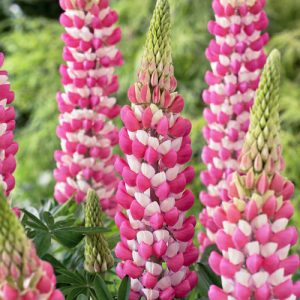
Lupine is also known as blue Lupine or wild Lupine. It grows up to 3 feet high and has large, daisy-like flowers that are a beautiful blue color. The flowers are also edible and can be eaten as a garnish with green beans or as an addition to salads. You can find lupines in the New York area in places such as Long Island, New York City, and Westchester County. The lupines have beautiful purple flower buds in the spring, attracting butterflies and hummingbirds. They also have a pleasant aroma of lemon grass, making them ideal plants for potpourri. Lupine grows in areas full of trees and shrubs, hillsides, and rooms with full sun. They can be found in New York City, Long Island, Westchester County, and other areas throughout the state. It is commonly used in floral arrangements and potpourri. The flowers are an excellent garnish for green beans and salads.
Wild Ginger
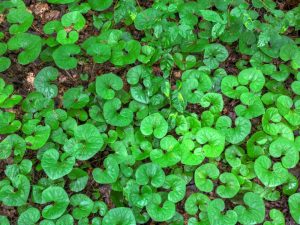
The wild ginger is a perennial plant that grows up to 4 feet tall with pale green leaves that grow on long stalks. The leaves have tiny dots that give it its name of “wild ginger.” The wild ginger has white flowers and small orange berries that turn red after they ripen in the fall months. You can find wild gingers in New York City and elsewhere throughout the state. These plants are excellent for attracting bees and beneficial insects, which helps keep mosquitoes away from your home or garden. They also attract hummingbirds who enjoy nectar from these little flowers during summer. The wild gingers make great additions to your garden because they repel other insects and are easy to grow. They do well in a wide variety of soils and climates.
This plant usually grows in the eastern half of New York state. The wild gingers are found throughout New York, especially in the Adirondacks and the Catskills. Thriving in areas with low sunlight, these plants will be best in zones 3 and 4. Wild ginger can be used in your garden and landscape. It can be planted on borders, along the edges of ponds, or to prevent erosion. You can also use wild ginger as a ground cover and put it around your house to keep away insects. Wild gingers make great additions to your garden because they repel other insects and are easy to grow.

